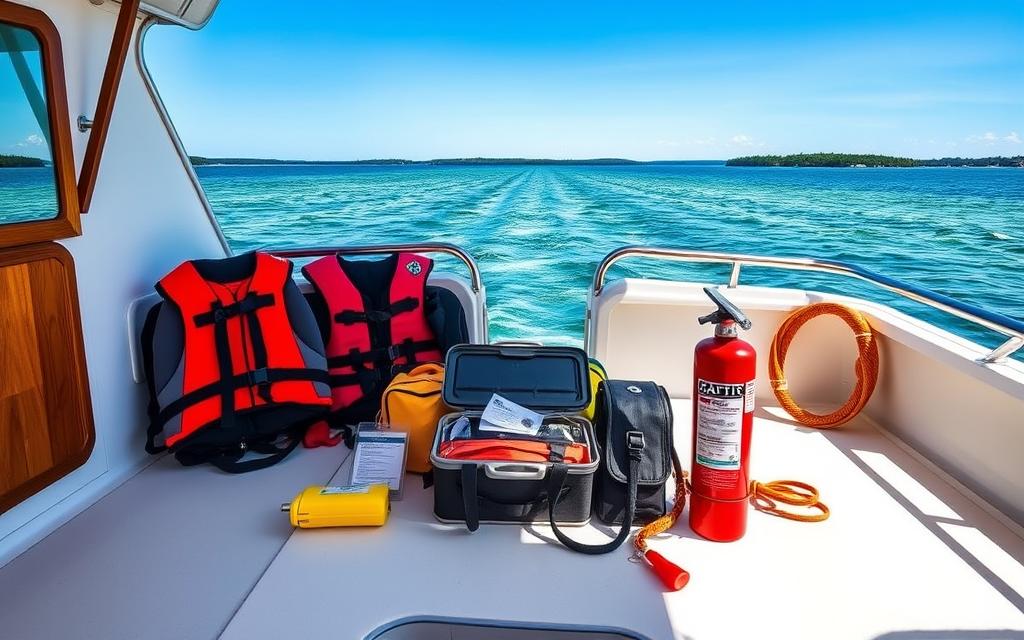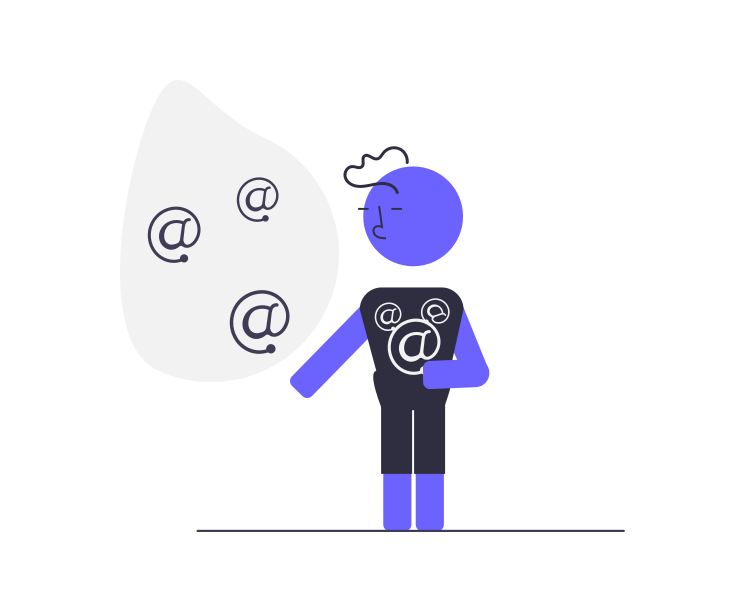Table of Contents
Could you survive a critical emergency on the water if your life depended on it? Boating safety isn’t just about enjoying the scenery. It’s about being ready for unexpected challenges that could turn a peaceful voyage into a life-threatening situation.

As an experienced houseboat owner, I’ve learned that knowing how to handle emergencies is key. This guide will give you the knowledge to face risks and keep yourself and your passengers safe.
Boating safety is more than just good intentions. It needs strategic preparation, quick thinking, and a plan for unexpected scenarios on the water.
Key Takeaways
- Learn critical emergency response techniques specific to houseboats
- Understand the unique safety challenges of water-based living
- Develop a proactive approach to maritime emergencies
- Recognize the importance of advanced preparation and training
- Master essential safety equipment and communication strategies
How to Handle Emergencies on a Houseboat: Understanding Common
Living on a houseboat comes with its own set of challenges. It’s different from living on land or in a boat. Knowing what emergencies can happen is key to staying safe.
Preventing accidents and knowing what to do is your best defense. Let’s look at the most important emergency situations you might face.
Fire Hazards on a Houseboat
Fires on houseboats are a big risk because there are few ways to get out. Things that can start fires include:
- Propane cooking systems
- Electrical wiring in tight spaces
- Engine problems
- Storing fuel the wrong way
“A single spark can become a catastrophic emergency on a houseboat” – Maritime Safety Expert
Water Ingress Scenarios
Water getting into your houseboat is a serious danger. It can happen through:
- Hull damage from hitting something
- Seals that aren’t working right
- Very bad weather
- Plumbing system failures
Being ready for emergencies is important. Regular checks and upkeep can lower the chance of accidents. Always have a plan and the right tools to handle emergencies fast and well.
Essential Safety Equipment to Have
Boating safety is all about having the right gear for emergencies. Every houseboat owner needs key safety items that could save lives. These items are vital for unexpected situations.
It’s not just about buying equipment. You must know how to use it and keep it in good shape. This preparation is key to staying safe on the water.
Lifebuoys: Your Floating Lifeline
Lifebuoys are key for staying safe on the water. They provide flotation help when someone falls overboard. Make sure to have several lifebuoys placed around your houseboat:
- Install near primary deck areas
- Ensure they are easily accessible
- Check structural integrity regularly
Fire Extinguishers: Battling Onboard Emergencies
Fire extinguishers are vital for fighting fires on houseboats. Choose marine-grade extinguishers for different fire types:
- Class A: Wood and paper fires
- Class B: Flammable liquid fires
- Class C: Electrical equipment fires
First Aid Kits: Medical Preparedness
A good first aid kit is essential for medical emergencies. Your kit should have:
- Waterproof bandages
- Antiseptic wipes
- Pain relievers
- Prescription medications
- Emergency contact information
“Preparation is the key to safety on the water. Invest in quality equipment and know how to use it.” – Coast Guard Safety Recommendation
Important Emergency Procedures
Being ready for emergencies on a houseboat can save lives. It’s key to have good marine rescue plans. This ensures everyone’s safety in unexpected situations.
Preparation is your best defense in emergencies. I’ll show you important steps to stay safe and calm in maritime crises.
Creating Complete Evacuation Plans
A solid evacuation plan is vital. It should cover:
- Clear escape paths from all parts of the houseboat
- Places to gather both on and off the boat
- Roles for each person on board
- Easy access to emergency gear
Conducting Effective Fire Drills
Fire drills are a must for safety. Do them every three months. This ensures everyone knows their role in a fire.
- Practice escaping from different fire spots
- Learn how to use fire extinguishers
- Practice communication
- Time how fast you can leave
“Preparedness is not about eliminating risk, but about managing it effectively.” – Maritime Safety Expert
By following these steps and staying proactive, you’ll be better prepared for emergencies. This boosts your confidence and safety in unexpected situations.
Responding to Fires on a Houseboat
Fires on a houseboat can be very dangerous. Knowing how to act fast can save lives. Every second is critical when a fire starts.

Houseboats have special fire risks because of their small spaces and few ways to get out. It’s important for everyone on board to know how to handle fires.
Immediate Fire Response Steps
- Stay calm and figure out where and how big the fire is
- Wake up everyone on the boat
- Find out what kind of fire it is
- Get the right fire extinguisher
Choosing the Right Fire Extinguisher
Each fire needs a special way to be put out. Use a Class C extinguisher for electrical fires and a Class B for fuel fires. Keep these extinguishers ready for emergencies.
“Prevention is always better than cure, but knowing how to respond can save lives.” – Maritime Safety Expert
When to Abandon Ship
Know when it’s time to leave the boat. If the fire:
- Spreads fast
- Blocks the main ways to get out
- Is near fuel or electrical stuff
- Can’t be stopped with what you have
Always put people’s lives first when dealing with houseboat fires. Have a plan for leaving the boat, know where to go, and practice drills to keep everyone safe.
Handling Medical Emergencies
Medical emergencies can happen fast on a houseboat. Being ready with first aid can be a lifesaver. Knowing how to act quickly is vital when help is far away.
While sailing, it’s key to know basic medical responses. Being prepared helps protect against health risks.
Common Medical Situations on Water
- Cuts and wounds from sharp objects
- Seasickness and motion-related illness
- Sunburn and heat exhaustion
- Allergic reactions
- Minor fractures and sprains
Essential First Aid Skills
To handle emergencies well, every houseboat crew should learn these skills:
- Cardiopulmonary resuscitation (CPR)
- Wound cleaning and bandaging
- Treating shock
- Recognizing serious medical conditions
“Knowledge is the best medical equipment when you’re miles from shore.” – Coast Guard Medical Training Manual
First Aid Training Importance
Professional first aid training boosts confidence in medical emergencies. Investing in medical preparedness can save lives.
| Training Level | Skills Learned | Recommended For |
|---|---|---|
| Basic | CPR, wound care | Recreational boaters |
| Intermediate | Advanced wound treatment, shock management | Frequent sailors |
| Professional | Full medical response, advanced life support | Commercial vessel crews |
Quick and calm action is essential in first aid on boats. Regular training and readiness can turn a bad situation into a manageable one.
What to Do if You Get Wet
Boating safety is all about knowing what to do when you get wet. Marine rescue steps can be the key to survival in houseboat accidents.
Immediate Overboard Response
When someone falls into the water, act fast. Here’s what to do:
- Immediately shout “Person Overboard!” to alert all passengers
- Keep visual contact with the person in the water
- Throw a flotation device toward the individual
- Prepare for a controlled rescue approach
Rescue Techniques
Effective rescue needs careful planning:
- Approach from the downwind side
- Move slowly to prevent creating dangerous waves
- Use a rescue platform or ladder if available
- Assist the person back onto the houseboat carefully
Recognizing Hypothermia Risks
Cold water is a big danger. Look out for these signs:
| Stage | Symptoms | Immediate Action |
|---|---|---|
| Early Hypothermia | Shivering, confusion | Remove wet clothing, warm gradually |
| Advanced Hypothermia | Muscle stiffness, shallow breathing | Seek immediate medical assistance |
“Prevention is always better than cure in boating safety.” – Coast Guard Safety Manual
Remember, your quick thinking can save lives during marine emergencies.
Navigating Bad Weather Conditions
Living or traveling on a houseboat means knowing how to handle emergencies in bad weather. Weather can change fast on the water. Being ready can save lives.
To stay safe in severe weather, you need knowledge, preparation, and quick thinking. Your ability to handle bad weather affects your safety and that of your passengers.
Storm Preparedness Strategies
Effective storm preparedness for houseboats includes several key steps:
- Monitor marine weather forecasts regularly
- Install a reliable weather radio
- Learn to recognize incoming storm signs
- Create an emergency weather kit
“Preparation is the key to survival on the water” – Experienced Maritime Captain
Essential Anchoring Techniques
Proper anchoring is critical when facing emergencies on a houseboat. Knowing how to secure your boat can stop dangerous drifting in storms.
| Anchor Type | Best Used In | Holding Power |
|---|---|---|
| Danforth | Sandy/Muddy Bottoms | High |
| Mushroom | Soft Lake Bottoms | Medium |
| Plow | Mixed Terrain | Very High |
When anchoring in bad weather, use multiple anchor points and check the rode length. Your safety depends on choosing the right technique for your environment.
Communication During Emergencies
Effective communication is key to staying safe on a houseboat. Knowing maritime distress signals and marine rescue procedures is essential. It’s part of every boat owner’s survival kit.

Water emergencies need fast and clear communication. Being able to send accurate signals and reach rescue teams can save lives.
Mastering VHF Radio Communication
VHF radios are your main lifeline in maritime emergencies. Here’s what you need to know:
- Always keep your VHF radio powered and within reach
- Learn standard maritime communication protocols
- Memorize emergency channel frequencies
Emergency Signaling Techniques
When regular communication fails, maritime distress signals are vital. Different methods can alert nearby vessels and rescue teams:
| Signal Type | Visibility | Effectiveness |
|---|---|---|
| Flares | High | Excellent |
| Signal Flags | Moderate | Good |
| Sound Signals | Limited | Moderate |
“In maritime emergencies, clear communication isn’t just helpful—it’s a lifeline.” – Coast Guard Safety Manual
Marine rescue procedures need practice and preparation. I suggest taking communication and signaling courses to boost your emergency readiness.
Backup Communication Options
Don’t rely on just one communication method. Consider these backup options:
- Satellite phone
- Emergency Position Indicating Radio Beacon (EPIRB)
- Handheld marine radio
By learning these communication strategies, you’ll be ready for emergencies on your houseboat.
Understanding Your Houseboat’s Systems
Boating safety means knowing your houseboat’s systems well. Electrical and fuel systems can cause accidents if not kept in check. It’s key to understand these systems to keep everyone safe.
Electrical System Safety Essentials
Marine electrical systems face special challenges. Moisture, corrosion, and tight spaces can be risky. Regular checks help avoid electrical failures that could be dangerous.
- Check shore power connections for signs of wear
- Inspect battery terminals for corrosion
- Test electrical circuits regularly
- Use marine-grade waterproof electrical components
Fuel System Precautions
Fuel systems need careful handling for boating safety. Mistakes can lead to serious accidents. Knowing how to manage fuel is key to avoiding disasters.
- Perform weekly fuel system inspections
- Check for any fuel line leaks
- Ensure proper ventilation in fuel storage areas
- Install carbon monoxide detectors
“Prevention is always better than cure when it comes to marine safety.” – Coast Guard Safety Manual
By being watchful and following these safety steps, you can lower risks from electrical and fuel systems on your houseboat.
Training and Drills
Emergency preparedness is more than just wanting to be ready. Onboard emergencies can strike fast. Your quick response depends on training and practice.
Good training turns panic into action. Spending time on drills builds a safety net for all on board.
Why Regular Training Matters
- Builds muscle memory for critical response scenarios
- Reduces reaction time during actual emergencies
- Increases confidence among passengers
- Identifies gaps in emergency procedures
Conducting Complete Emergency Drills
Planning drills is key for handling emergencies. I suggest a detailed plan that covers many scenarios.
| Drill Type | Focus Area | Frequency |
|---|---|---|
| Fire Response | Evacuation routes, extinguisher use | Quarterly |
| Man Overboard | Rescue techniques, communication | Bi-annually |
| Medical Emergency | First aid application, communication | Annually |
“Practice makes perfect, when lives are at stake.” – Maritime Safety Expert
Emergency preparedness isn’t about fear. It’s about gaining confidence and skill. Each drill turns chaos into a well-coordinated response.
Developing a Personal Emergency Strategy
Creating a strong emergency plan is key for houseboat safety. I’ve learned that being prepared can greatly help in emergencies. Start by knowing your boat’s layout, risks, and passenger needs.
Every houseboat is different, so your plan must fit your boat. Make a detailed guide for different emergencies like medical issues, fires, and bad weather. It should be clear for everyone.
Customizing Emergency Plans
Good emergency planning is all about being specific. Map out safe areas, find escape routes, and mark emergency gear. Visual guides help everyone find important safety info fast.
Involving All Passengers in Planning
When everyone knows their role, your plan works better. Give a safety briefing to new groups, covering emergency steps and where to find safety gear. Working together makes your boat safer and helps in emergencies.
FAQ
What are the most critical safety items I should have on my houseboat?
You need fire extinguishers, lifebuoys, and a first aid kit. Also, have emergency communication devices, life jackets, flares, and a carbon monoxide detector. Don’t forget an emergency position-indicating radio beacon (EPIRB). These items can save lives in emergencies.
How often should I conduct emergency drills on my houseboat?
Do emergency drills at least every three months. Or before long trips. Practice fire drills, man-overboard procedures, and evacuations. This ensures everyone knows their role and can act fast in emergencies.
What should I do if a fire breaks out on my houseboat?
Alert everyone and check the fire’s size and type. Use the right fire extinguisher. If the fire grows, start your evacuation plan. Make sure everyone wears life jackets and be ready to leave the boat if needed.
How can I prevent water ingress on my houseboat?
Check your hull and seals often. Make sure bilge pumps work and drainage systems are good. Regular maintenance and quick fixes can prevent big problems.
What communication methods should I have in case of an emergency?
Use a VHF marine radio, a satellite phone, and emergency flares. Consider an EPIRB. Learn distress signal protocols and teach passengers how to use these tools.
How do I prepare for severe weather while on a houseboat?
Always watch the weather forecast. Have a storm plan ready. Secure loose items and check your anchors. Make sure your boat is balanced and have an escape route. Safety first, and be ready to move if weather gets bad.
What medical emergencies should I be most prepared for on a houseboat?
Be ready for seasickness, cuts, burns, heart issues, allergies, and hypothermia. Keep a first aid kit handy. Have someone trained in first aid on board. Know how to keep a patient stable until help arrives.
How important is first aid training for houseboat passengers?
First aid training is key. At least one person should know CPR and advanced first aid. All passengers should know basic first aid and emergency procedures.
What should I include in my houseboat’s emergency communication plan?
Your plan should list emergency contacts, marine rescue info, and your boat’s details. Include communication frequencies and a step-by-step guide for emergencies. Make sure everyone knows and can access this plan.
How do I handle a person overboard situation?
Shout “Man Overboard” and keep the person in sight. Throw a flotation device and slow down the boat. Carefully go back to the person and use the right retrieval methods. Have someone track the person and be ready for rescue and first aid.



